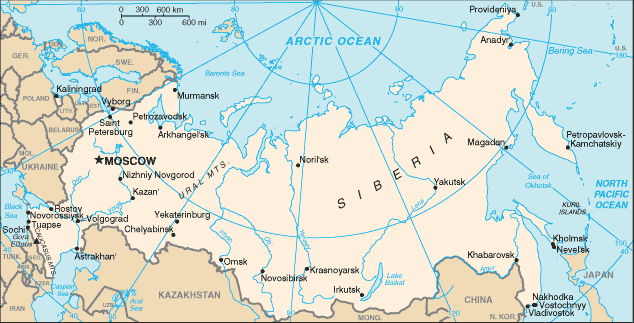By NewsDesk @infectiousdiseasenews
The Office of Rospotrebnadzor in the Stavropol Territory reports the first case of infection with Crimean Congo hemorrhagic fever (CCHF) this year in the southwestern Russia region.

Image/CIA
The patient is a resident of the Arzgir district with confirmed diagnosis of CCHF after a tick bite.
In 2019, Crimean Congo hemorrhagic fever was confirmed in at least 38 people in the Stavropol Territory.
Crimean-Congo hemorrhagic fever is a widespread disease caused by a tick-borne virus (Nairovirus) of the Bunyaviridae family. The CCHF virus causes severe viral hemorrhagic fever outbreaks, with a case fatality rate of 10–40%.
Got Smallpox? merchandise
Animals become infected by the bite of infected ticks and the virus remains in their bloodstream for about one week after infection, allowing the tick-animal-tick cycle to continue when another tick bites. Although a number of tick genera are capable of becoming infected with CCHF virus, ticks of the genus Hyalomma are the principal vector.
The CCHF virus is transmitted to people either by tick bites or through contact with infected animal blood or tissues during and immediately after slaughter. The majority of cases have occurred in people involved in the livestock industry, such as agricultural workers, slaughterhouse workers and veterinarians. Human-to-human transmission is possible.
- Ebola Sudan and Marburg Vaccines: Sabin Vaccine Institute gets $20 million from BARDA for further development
- Texas: Additional Rabbit Hemorrhagic Disease confirmations reported
- Cats, COVID-19 transmission and what should pet owners do?
- Pediatric Multi-System Inflammatory Syndrome potentially associated with COVID-19 in New York
- Sweden releases results of COVID-19 prevalence investigation
- Senicapoc, a drug developed to treat sickle cell anemia, being studied for COVID-19
- Russia: Dozens of measles cases reported in St. Petersburg

